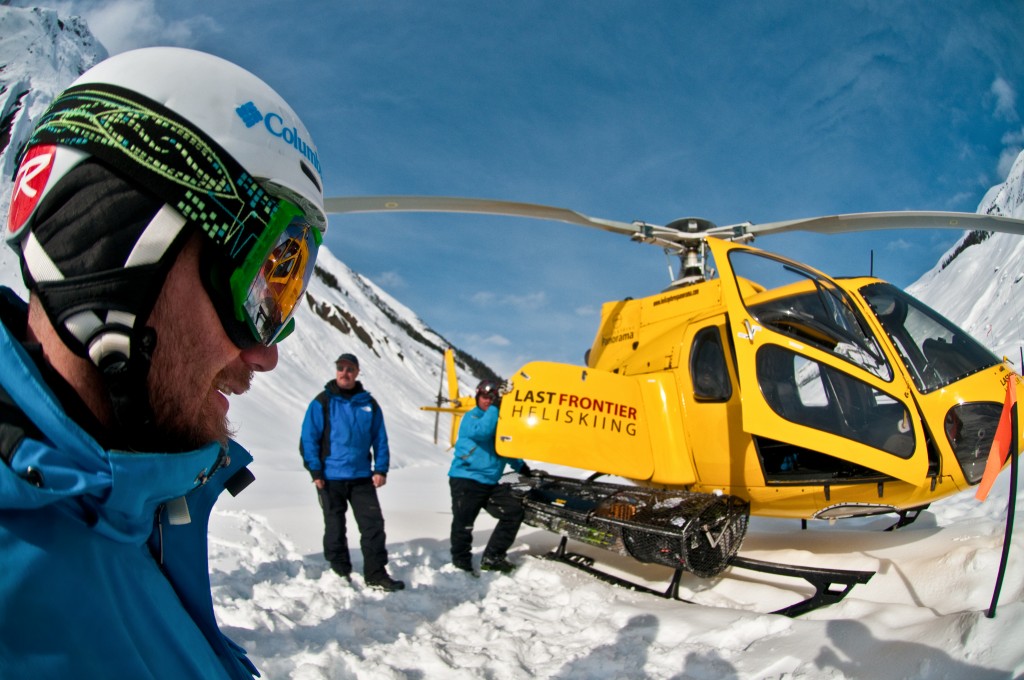Heli Ski Bags: Planning your next trip
Buy a ski bag can be as important a decision as choosing which new pair of skis you are going to purchase next winter. Having a bag that will successfully get your gear to and from the heli skiing location, as well as protecting it from over enthusiast airport baggage handlers is vital, especially if you’ve forked out so much money for decent equipment.
What kind of bag you’ll need depends a lot upon what type of skiing trips you’ll be going on most. Are you flying a lot to reach us up in northern BC, or do you normally sling your skis on a roof rack and hit the roads? Do you normally take just one or two pairs of skis? How often will you use your skis and new bag? With these questions in mind we can look at the more specifics – fabric materials, zippers, padding and straps and handles.
Obviously we want our fabric to be pretty heavy duty, offering some amount of protection to, (and from), our gear. The weight of the fabric, often described in ‘Denier’, plays a large part in the strength of the bag. It actually refers to the weight of the yarn woven into the fabric. Perhaps more importantly, look for the tightest possible weave. Nylon is the material of choice here, stronger than polyester. Avoid wherever possible bags made from Ramie or Ramie Polyester and Cotton Duck – these are disposable style bags commonly found in non-sporting goods stores.

Zippers literally make or break a bag. Often the first thing to break, replacing a zipper can be more costly than replacing the whole bag. For this reason, the bigger, and more heavy-duty zipper you get the better. As well as being more durable, they are easy to get out of a mess if they get snagged. There are actually two types of zipper to choose from – tooth or coil styles. Tooth zippers will be more prone to snagging, and harder to free, than the coils.
Most good ski bags come in two versions: those with padding, and those without. Which you choose will be dependant on what you will be likely to use you bag for. Having padding for traversing airports and baggage handlers is obviously a good idea. Just for carrying your gear to and from the car, maybe less so. As well as protecting your equipment from knocks and bumps, padding is also there to protect the bag from the equipment itself. Sharp skis will easily punch through lightweight bags after no more than a little use. We recommend, padding or not, using your clothing as extra protection. Stuff all your thermals around your bindings, and try and get as much stuff in there as possible (without putting to much excessive pressure on the zippers)!
Lugging big, wieldy ski bags around can be somewhat of a problem without decent straps. Look for bags that feature straps and handles that won’t amputate fingers after several minutes carrying. Neoprene handles are becoming more popular, and are extremely finger friendly. A set of wheels also makes life a whole lot easier if you’re planning on covering much distance on foot (or even between departure terminals).
Make sure they are incorporated into the bags design, and not just attached with rivets – these won’t last the first flight. Wheels are generally a great innovation, ones styled on inline skates are often the best, and smoothest. However they will add a few more pounds to your overall baggage weight – something to bear in mind if you travel a lot by air and are extremely weight conscious.
Tags: Heli Skiing, Heliskiing, Heli Ski, Heliski, Heli Skiing Tour, Heli Skiing Holiday, Heli Skiing BC, Heli Skiing Resorts, Heli Skiing Lodges


